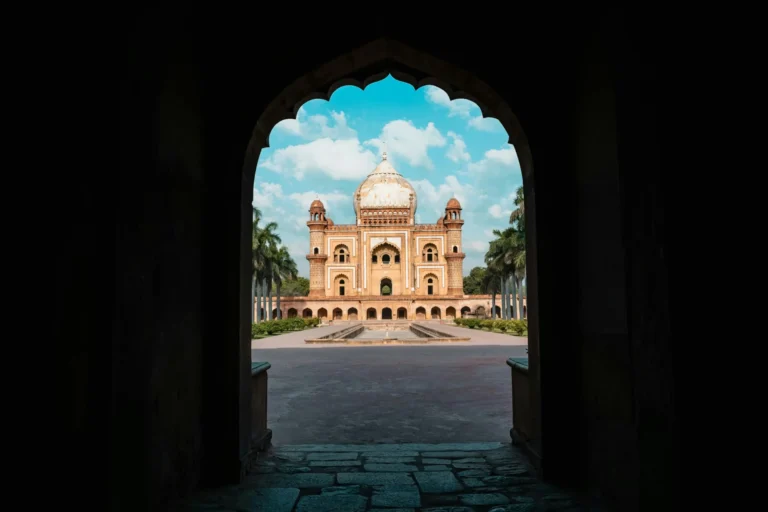If you’re planning a South India temple tour and worried about costs, I’ve been there. I’ll be honest. I didn’t think a temple trip across South India would be possible on a tight budget, but I gave it a shot anyway. What I found? It totally is. With a bit of planning (and a lot of walking), you can see some of the region’s most beautiful, historic temples without blowing your savings.
If you’re thinking of doing a South India temple tour on a budget, book trains via Indian Railways. Here’s how I did it and what I wish I had known before I started.
Table of Contents
ToggleTemples in Chennai
I landed in Chennai with just a small backpack and a vague plan. First stop: Kapaleeshwarar Temple in Mylapore. Entry was free, and the vibe? Electric. People lit lamps, chanted, and moved in and out of shrines. It felt timeless. I stayed in a small lodge nearby, with a fan, a room, and a clean bathroom for about ₹500.
Food was no trouble at all. Plenty of tiny shops served hot idlis and samosas for ₹40, and filter coffee for ₹15. It was an easy start.
Kanchipuram – Not Just Silk
A couple of hours by bus from Chennai, Kanchipuram was one of my favourite stops. The temples here are old, like, really old. I visited Ekambareswarar and Kailasanathar Temples. Both felt calm and not too crowded. Rooms near the temples are cheap, especially if you don’t mind shared bathrooms.
What I loved most? The mornings. Misty, with temple bells ringing in the distance. Peaceful in a way that stays with you.
Madurai – All About Meenakshi
Next, I headed to Madurai. The Meenakshi Temple is something else towering, colourful, and alive 24/7. I stayed in a guesthouse right across from the temple, which cost me ₹400 a night. It was nothing fancy, but the temple view made it feel special.
There’s so much happening around Meenakshi markets, food stalls, and music. I probably could’ve stayed for a week, just soaking it in.
A Detour to Rameswaram
This one’s a bit out of the way, but worth it. I took a train from Madurai to Rameswaram. Watching the sea appear as we crossed the Pamban Bridge was unforgettable. The temple itself is enormous. There’s this tradition where you bathe in 22 wells before entering the main sanctum. Locals help you out for a small fee, and it’s oddly refreshing.
Rooms here are simple, and many pilgrims share spaces to cut costs. I joined a group for lunch at a local mess, where I could have unlimited rice and sambar for ₹60.
Trichy – A Temple on a Rock
If you’ve never climbed a temple carved into rock, Trichy’s Rockfort is worth the stop. There’s also Srirangam, a vast temple complex dedicated to Vishnu. I walked a lot in this city. It’s hot, but manageable if you start early.
I stayed in a temple guest house. Friendly staff, immaculate. ₹350 a night. They even helped me plan my next leg.
Travel Tricks That Helped Me
Buses Over Taxis: State buses are super cheap. Sometimes crowded, but they run almost everywhere.
Eat Local, Always: Messes and roadside food stalls are not only cheaper but also taste better.
Carry a Steel Bottle: Most temples have water refill stations. Saved me a lot.
Chat with Locals: People helped me find cheap rooms, free meals, and off-the-map temples I wouldn’t have known about otherwise.
What It All Cost
I didn’t track every rupee, but here’s a rough guess for my 10-day trip:
Stay: ₹300–₹500/day
Food: ₹100/day max
Travel: ₹1,500 total (buses + one train)
Temple entry: Free almost everywhere
Total: Around ₹6,000 to ₹7,000
Not bad, right?
This kind of trip isn’t for everyone. You’ve got to be okay with heat, crowds, and simple living. But if you’re curious, open-minded, and okay with taking things as they come, a budget pilgrimage in South India is totally worth it.
It’s not just about the temples. It’s about chai shared with strangers, silent moments under ancient trees, and the feeling that maybe you don’t need as much as you thought.
So, yeah, if you’re thinking about doing a South Indian temples itinerary on the cheap, go for it. Keep it light, stay flexible, and let the road (and the gods) surprise you.


